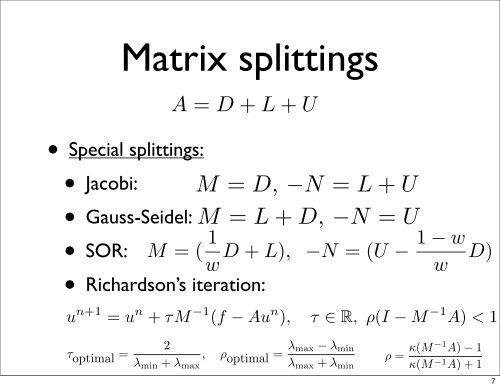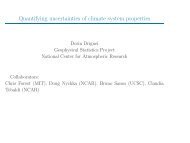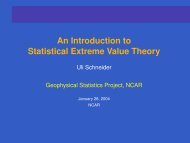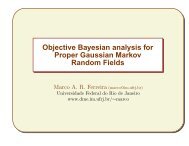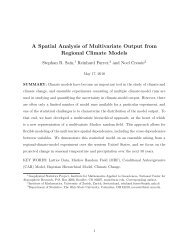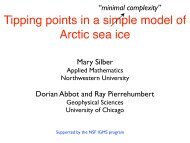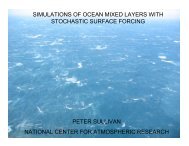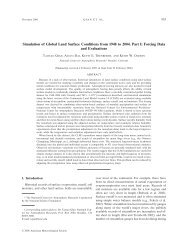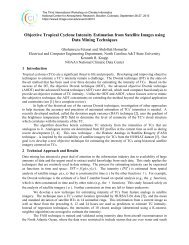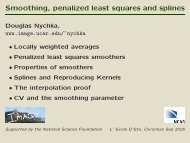Introduction to Krylov subspace methods - IMAGe
Introduction to Krylov subspace methods - IMAGe
Introduction to Krylov subspace methods - IMAGe
You also want an ePaper? Increase the reach of your titles
YUMPU automatically turns print PDFs into web optimized ePapers that Google loves.
Gauss–Seidel A = L + D + U ; M = L + D, −N = Uand ρ(A) = max{|λ− N and Special ρ(A) splittings i | s.t. λ i = eigenvalue of A}.otice that we have the following= u n+1 4-stepsmax{|λ:= u n + i | Ms.t. −1 (fλ− i Au = n eigenvalue ) o(1) Mz n = f − Au n = r ningssplittingsMz Mz n = n r= n r n(1) Mz n = f − Au n = r n(2) ˜z n ˜z n = = Az nAz nMatrix splittingsu n+1 = u n + M −1 (f − Au n )[1 ] Jacobi A = D + L + U ; M = D, −N = L• Special splittings:(3) u n+1 = u n + ˜z n[2 ] Gauss–Seidel A = L + D + U ; M = L + D(3) u n+1 = u n + ˜z n+ L + U ; M = D, −N = L + UA = D + L + U ; M = D, −N = L + U(4) r n+1 = r n − ˜z n• Jacobi: Notice that we have the following 4-steps :• Gauss-Seidel: 5 KRYLOV SUBSPACE METHODSM = ( 1 1 − wD Def. + L), Condition −N number = (U of a matrix − A,w w D)Richardson’s iteration:(4) r n+1 = r n − ˜z n( ∵ Au n+1 = Au n + AM −1 r n ; f − Au n+1 = f − Au n − AM −1 r n ;r n+1 = r n − ˜z n )l A = L + D + U ; M = L + D, −N = U–Seidel Richardson’sr n+1 = A Iterationr n = − L ˜z(for n + )preconditioned D + U version ; M by= M) L + D, −N = Ue have the following 4-steps :u n+1 = u n + τM −1 (f − Au n ), τ ∈ R, ρ(I − M −1 A) < 1Richardson’s hat we have Iteration the (for following preconditioned 4-steps version : by M)( ∵ Au n+1 = Au n + AM −1 r n ; f − Au n+1 = f − Au n − A• SOR:•(1) Mz n = f − Au n = r nhere τ is a relaxation parameter, 0 ≤ τ ≤ 2−1 A.u n+1 = u n + M −1 (fu n+1 Mz= n = r u n+1 u n + n M −1= u n (f −+ M −1 Au n )For the case of Richardson,(f − Au n )u n+1 = u n + τM −1 (f − Au n ), τ ∈ R, ρ(I − M −1 A) < 1here τ is− Au n τ a(2)relaxation= r n ˜z n =parameter,Az n 0 ≤ τ ≤ 2optimal =, ρλ min + λ max optimal = λ max − λ minλ max + λ minn n n−1 A.2λ max,λ max : eigenvaluesκ(A)of= λ max.λ minλ max : eigenλ max, ρ = κ(M −1 A) − 1κ(M −1 A) + 1 . 7


